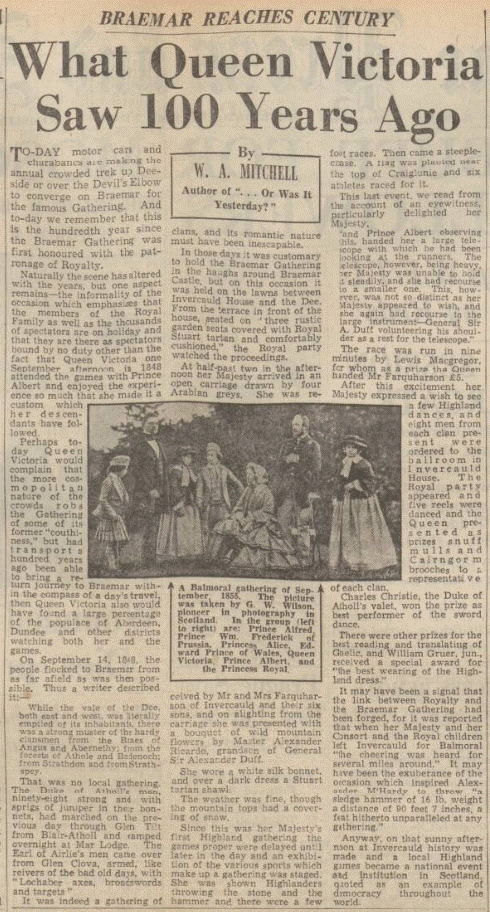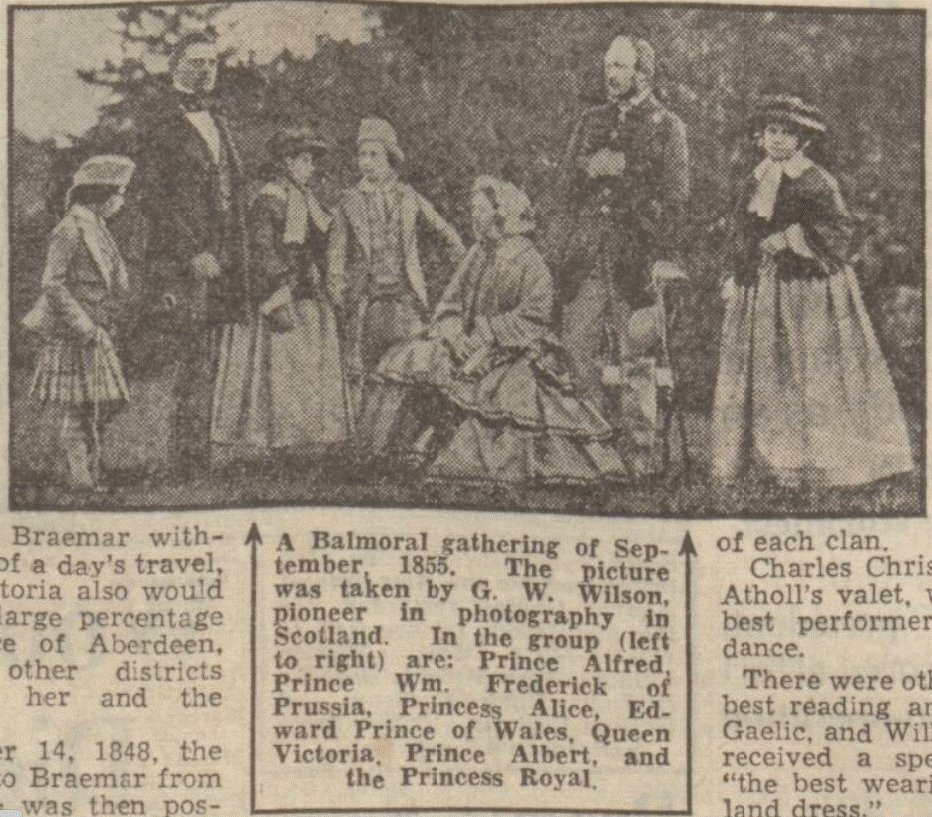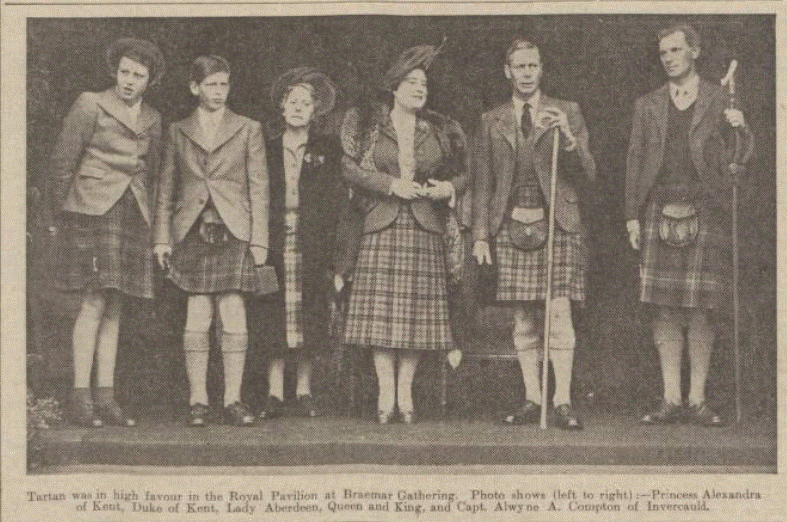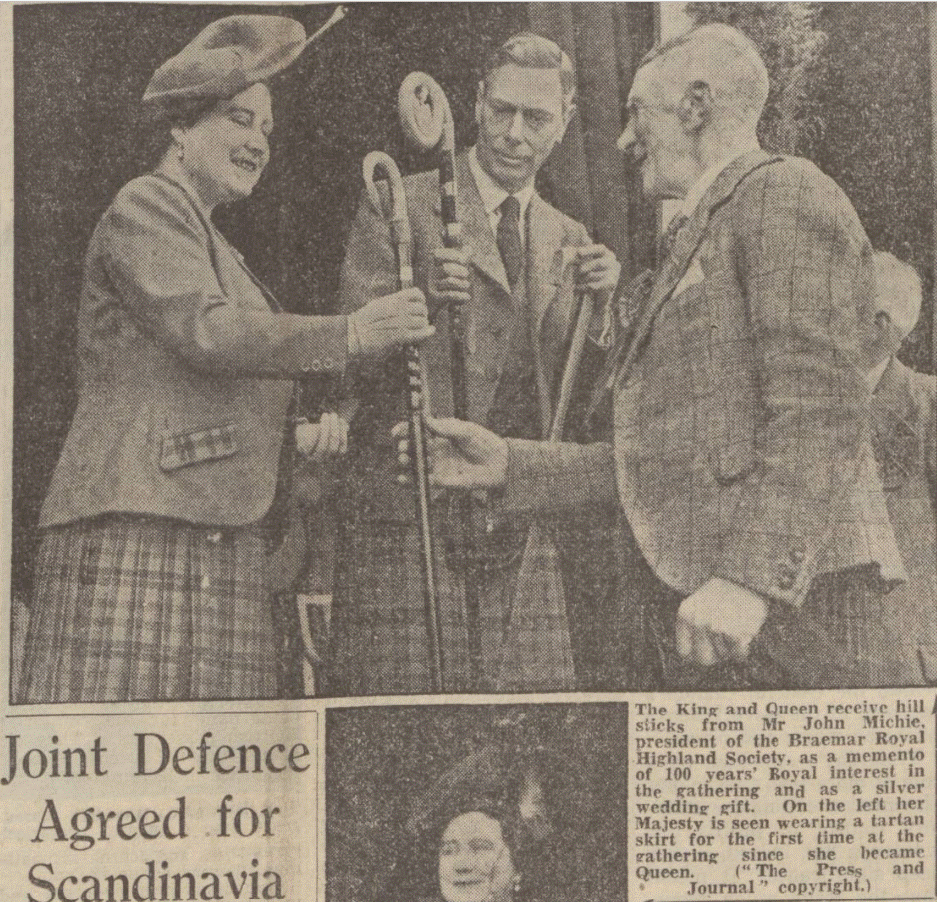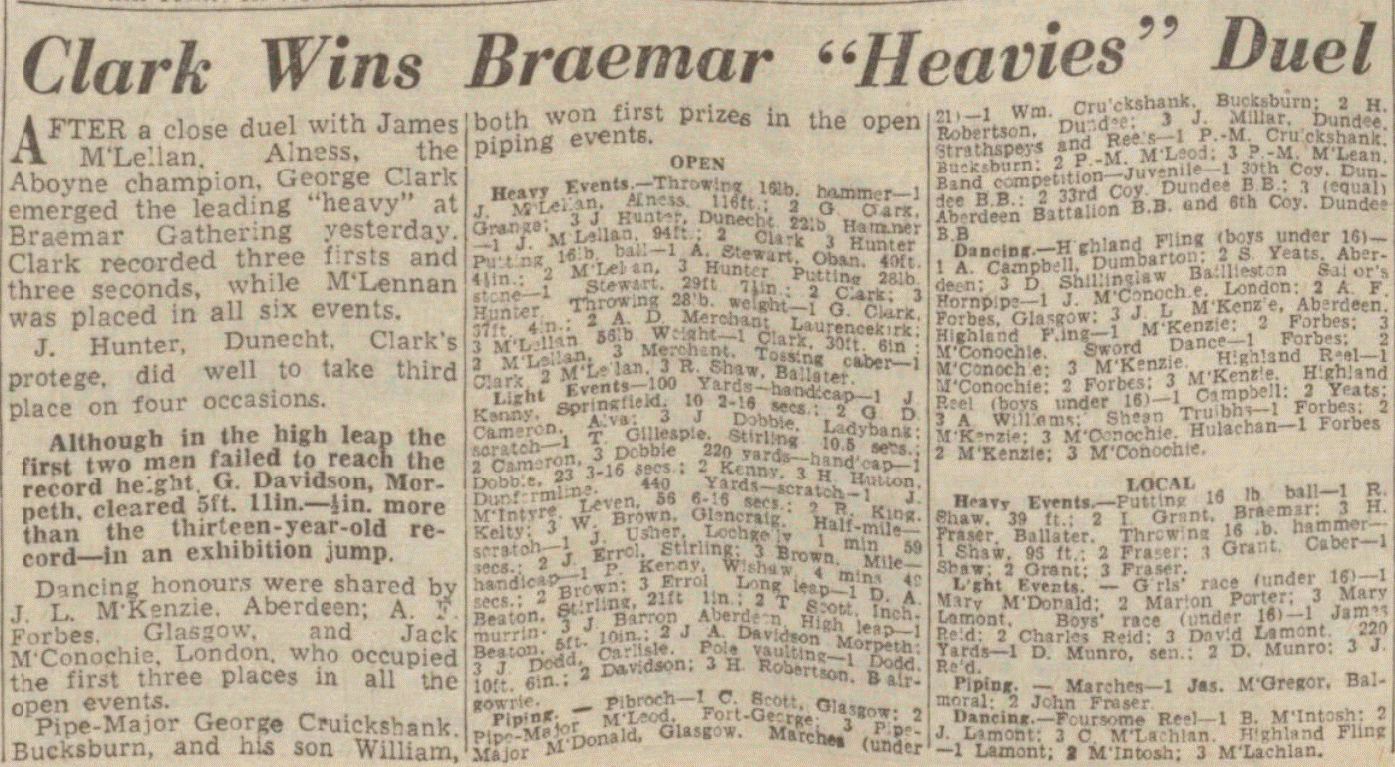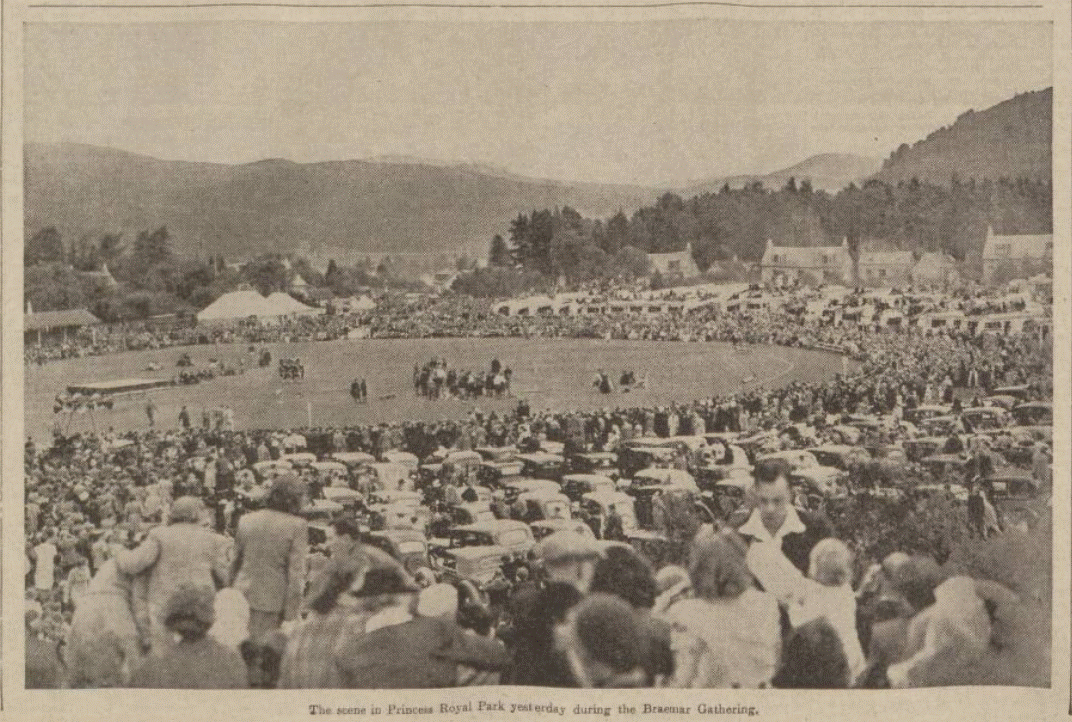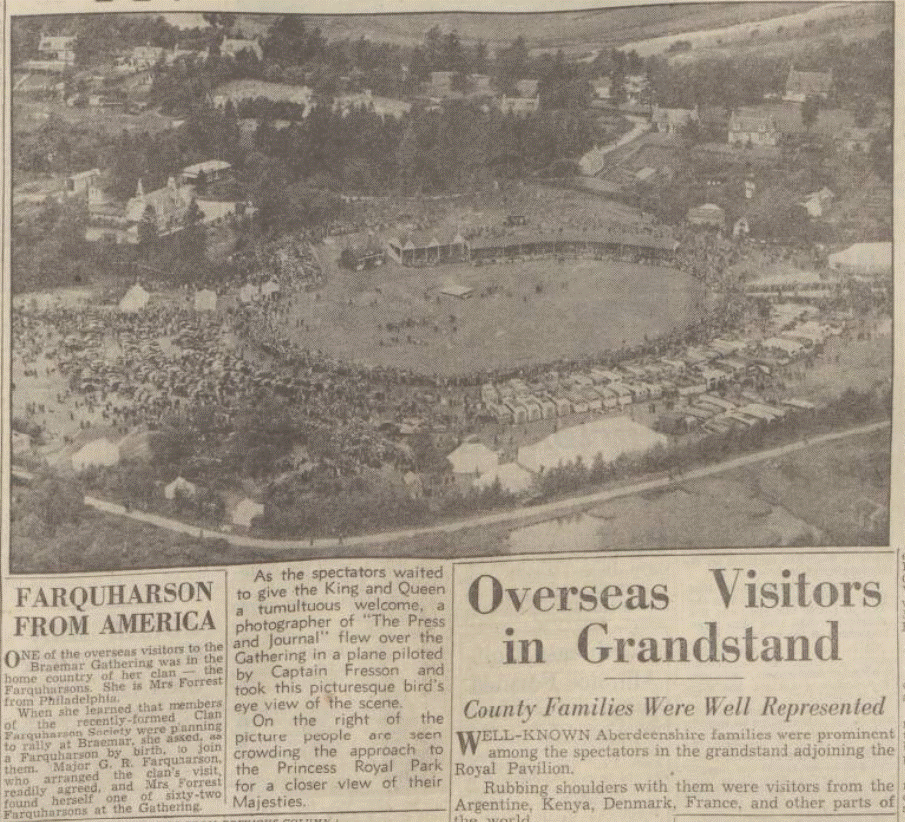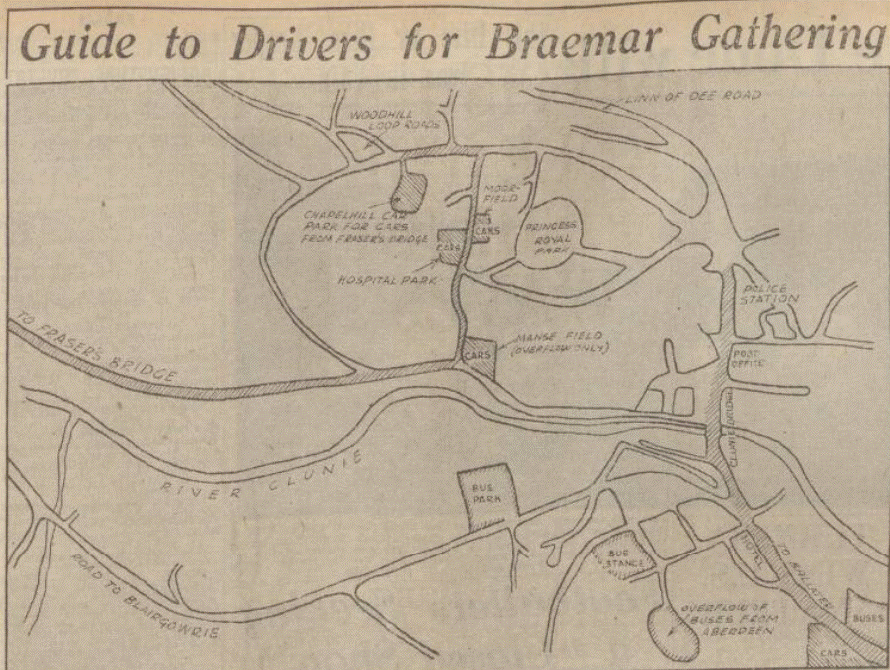Royal patronage for any business is rewarded with the appropriate crest above the door and is an honour not easily gained. 100 years of royal patronage was prized by the Braemar Games orgnaising committee and the Games aspect of the Gathering really celebrated the connection. The Press & Journal published this article on 9th Septelber, 1948.
1948 was, as has been said, the centenary of the royal patronage of the Gathering and it was a notable one. There were lots of photographs of the occasion – almost entirely of the Royal Family, and mostly in the Aberdeen Press & Journal. The paper even printed a photograph of Queen Victoria at Braemar in in the article above in 1855). The difference with the photograph below is easily seen – posed but not as obviously as in the 19th century picture, no small children, and taken in the Royal Box rather than posed with a rustic background. The connection and tradition carried on.
The King and Queen were presented with a gift from the people of Braemar in recognition of the occasion – the gift was of two hill walking sticks with carved rams horn handles, as shown in the photograph below. One for the King and another for the Queen as a silver wedding gift. Spectators came from all over the countryside and from beyond too. There were spectators from France, the Argentine, Kenya and some from Denmark who arrived on horseback from Bridge of Earn. Noted as a picturesque figure was 26 year old Linden Dial from Long Beach in California, a Mormon missionary who cycled from Aberdeen via the Aboyne Games, wearing a white baseball cap. Another to merit individual notice was Mr Edward Beckingham from British Columbia who was Scottish born and had emigrated in 1919.
Locally, there were many from all over Scotland eg there was a huge contingent from Fife, and the manager of bus company W Alexander said that bookings for Braemar were so tremendous that they could not possibly accommodate all the parties that wanted to make the trip. The first bookings were made just after the New Year and they increased steadily as the summer approached. A total of 75 buses left the towns and villages of Fife on the day. There were 300 people from Perth and two buses from Auchterarder had 11 spectators over the age of 70. As the French party said, “It was ‘formidable'”.
A record crowd of 30,000 had been present at the 1947 Games but that was exceeded by an estimated 5000 additional spectators. The royal party stayed for 90 minutes and at the end the pipers played “Happy we’ve been a’ th’gither”.
The weather on the day was brilliant sunshine and all that the competitors could want, there was a big crowd, the opposition was there too and the atmosphere must have been electric.
The competitions were as close as ever with several established athletes taking part – the headline performer was George Clark who was a regular at the Games as a heavy athlete, his close rival James McLellan was there again as was A Stewart from Oban, and note that T Scott (Inchmurrin) was second in the long jump.
- Replying to a questionnaire in September 1986, Tom McNab had this to say of George Clark:
“I met George Clark, one of the throwers of that period, a couple of years back. He was putting 46′ and throwing 120′ in the hammer back in the 1920’s and 30’s. He was still competing in the early 1950’s and was the first throw the Braemar Caber when he was over 50. A wonderful man! Clark is a classic example of the ‘agricultural strength’ of the classic Highland Games athlete.
Agricultural strength?
Yes. It’s the type of strength gained through daily manual labour, quite different from the elastic strength of the modern weight-trained athlete. I asked Clark if there was any athlete of his period who could compare with the modern throwers. He said only one, the great AA Cameron who had retired by the 1920’s when Clark was coming to his best. Cameron was credited with a putt of 55′ 8″ back in the early 1900s.
Do you accept this?
No, if only because it in no way relates to his other putts which were in the sub-50′ area. Indeed there is no record of Cameron ever putting over 50′ with a genuine 16 lb shot on level ground. But he was clearly a magnificent athlete, regularly clearing 5′ 0″ in the standing high jump.
- And of course Tom and his brother Jay would be successful competitors on the circuit for many years to come with Jay in particular being a superb all-round athlete. McNab has this to say of Jay:
What was Jay Scott capable of?
He cleared about 1.90metres in the high jump, just short of 7 metres in the long jump, and just over 14 metres in the triple. But he could also throw 14 metres in the shot, run a hundred yards in close to evens, and toss the shafted hammer about 37 metres!
These are good marks but dn’t look fantastic by today’s standards?
No, but you must remember the conditions under which they were performed, football pitches or more often rough farmers’ fields. Jay Scott was, in my view, one of the greatest Scottish athletes of all time: no question of it in my mind.
He seems to have made a great impact on you?
Jay Scott had a wonderful athletic charisma. He was the essence of athleticism, tall and good looking, with a beautiful animal quality in all his movements. He was simply marvellous.
The two pictures below give some impression of the numbers – one from inside the ground and the other from a low flying plane.
There was even a parking map printed in the P & J for the guidance of the many motorists who were expected to attend.
.
